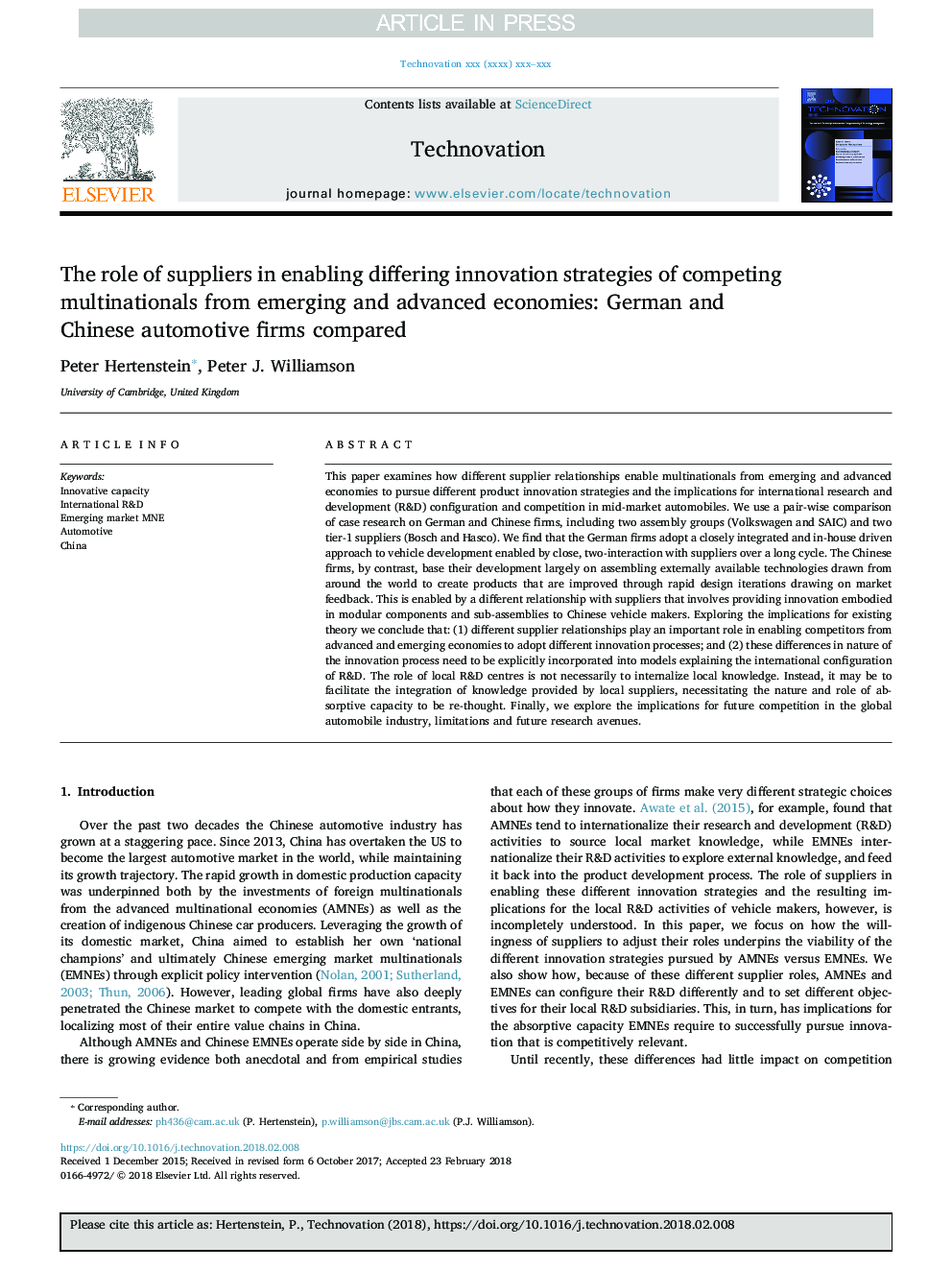| Article ID | Journal | Published Year | Pages | File Type |
|---|---|---|---|---|
| 7427093 | Technovation | 2018 | 13 Pages |
Abstract
This paper examines how different supplier relationships enable multinationals from emerging and advanced economies to pursue different product innovation strategies and the implications for international research and development (R&D) configuration and competition in mid-market automobiles. We use a pair-wise comparison of case research on German and Chinese firms, including two assembly groups (Volkswagen and SAIC) and two tier-1 suppliers (Bosch and Hasco). We find that the German firms adopt a closely integrated and in-house driven approach to vehicle development enabled by close, two-interaction with suppliers over a long cycle. The Chinese firms, by contrast, base their development largely on assembling externally available technologies drawn from around the world to create products that are improved through rapid design iterations drawing on market feedback. This is enabled by a different relationship with suppliers that involves providing innovation embodied in modular components and sub-assemblies to Chinese vehicle makers. Exploring the implications for existing theory we conclude that: (1) different supplier relationships play an important role in enabling competitors from advanced and emerging economies to adopt different innovation processes; and (2) these differences in nature of the innovation process need to be explicitly incorporated into models explaining the international configuration of R&D. The role of local R&D centres is not necessarily to internalize local knowledge. Instead, it may be to facilitate the integration of knowledge provided by local suppliers, necessitating the nature and role of absorptive capacity to be re-thought. Finally, we explore the implications for future competition in the global automobile industry, limitations and future research avenues.
Keywords
Related Topics
Social Sciences and Humanities
Business, Management and Accounting
Business and International Management
Authors
Peter Hertenstein, Peter J. Williamson,
